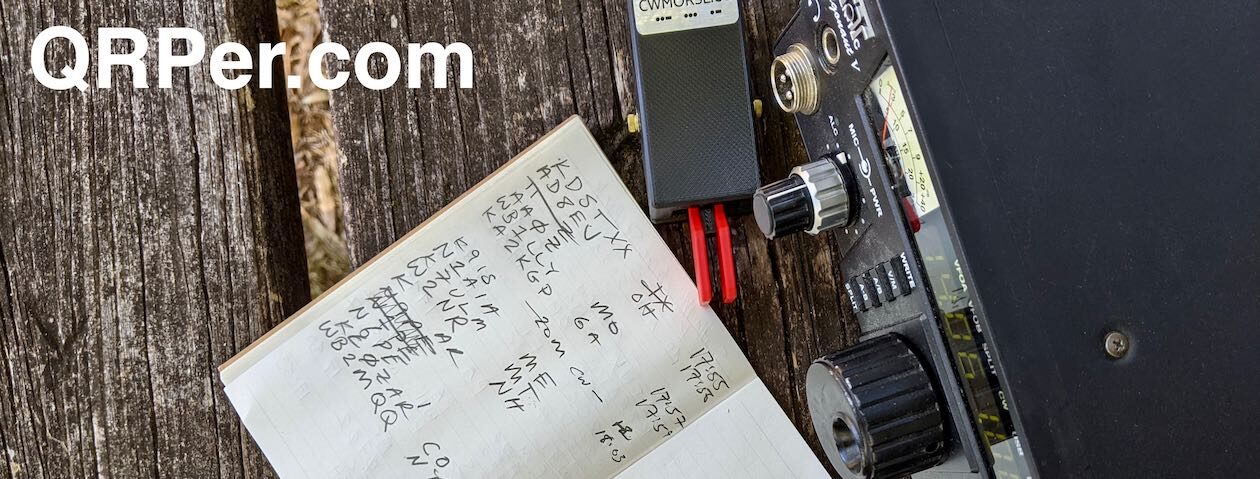
Many thanks to Pete (WB9FLW) who notes:
Adam BD6CR of CR Kits is getting close to releasing the FT8 DSB Transceiver. Below is some preliminary information:
D4D: A simple QRP transceiver for FT8
Adam Rong, BD6CR
D4D stands for DSB transceiver for Digital modes. It is a Double Sided Band transceiver kit designed for digital modes, especially for FT8. If have chance to try FT8, you will be amazed by the strong decoding capability offered by the communication protocol, digital signal processing and software. I still remember clearly a YouTube video by W6LG who communicated with bulbs. I started to think how much the transceiver could be simplified if you have a moderate antenna like a full sized dipole or EFHW.
A DSB transceiver is much simpler than a usual SSB transceiver, however it was never used for FT8 as far as I know. I did some experiments on my Choc perf board. I started with a direct conversion receiver for FT8 and it worked okay. Then I made a DSB transmitter and the transmitted signal can be decoded. By referring to the designs of AA7EE, VK3YE and ZL2BMI, I combined them using only one NE602 and a PTT switch and it gave me success to make a few FT8 QSO’s.
Personally I really enjoyed it because a manual PTT switch will save power consumption and circuit complexity, but you will need to well sync with computer, although it was not really a problem for me. Per request from a few hams, I found a VOX control circuit and modify the hold time to be compatible with FT8, and I put them together and made a few improvements on the signal purity and frequency stability, and it became our D4D. Do we have to worry about the unwanted Lower Side Band? Maybe, but for a transmitter of 1-watt, it is not really a big problem. Is it just a toy for a transmitter of 1-watt and only half of the power will be effective? Not really, as I can easily make a few QSO’s as far as 1500 miles range for 40-meter band.

Here is the brief specifications I have measured (subject to change without notice):
Summary: Crystal controlled single frequency DSB transceiver for 20m (14.074MHz), 40m (7.074MHz) or 80m (3.573MHz), other frequencies could be added per request
Power supply: 10-14V DC regulated power supply or battery pack, 12V is recommended, center positive, reverse polarity protection available
Current consumption in RX: 15mA
Current consumption in TX: about 260mA(?) at 12V, and about 300mA at 13.8V
RF output: about 1W for 20m band at 12V, a bit more for lower bands like 40m and 80m
Spurious suppression: no worse than -50dBc
Antenna connector: BNC connector, 50 ohm
Audio in connector: 3.5mm mono, at least 600mV to activate VOX, connects to headphone connector at PC sound card, no dedicated PTT connector is required
Audio out connector: 3.5mm mono, connects to microphone connector at PC sound card
Amber LED: TX status
Green LED: RX status
Frequency stability: Okay for FT8 mode per test. If the optional heater resistor R20* is added, after warm up of about 3 min, long term frequency stability in 10 min will be improved at the cost of acceptable short term frequency stability sacrifice in 30 sec.

Let us briefly go through the circuit: The input audio will activate the VOX circuit of D2 (1N4148), Q5 (2N3906), Q6 (2N3904), Q7 (2N3904) and Relay. The relay is a DPDT type and controls both antenna and power supply. The LPF consists of L2, L3 and surrounding capacitors, and it is switched to either transmitter output or receiver input. The power supply is polarity protected by D1 (1N5817) and switched to either receiver circuit or transmitter circuit. The receiver circuit is only for audio amplifier consists of Q1 (2N3904) and optional heater resistor R20*, while the transmitter circuit is for RX muter Q8 (2N3904), TX driver Q3 (2N3904) and TX final Q4 (BD139). X1 is a filter in the receiver front end to help eliminate strong broadcast interference, and X2 is the crystal for the built-in oscillator in U1 (NE602). U2 (78L05) is the 5V regulator for U1, and Q2 (2N3904) is a buffer amplifier in the TX chain.
Thanks for sharing this, Pete! What a simple transceiver concept!
We’ll post updates as they become available.
